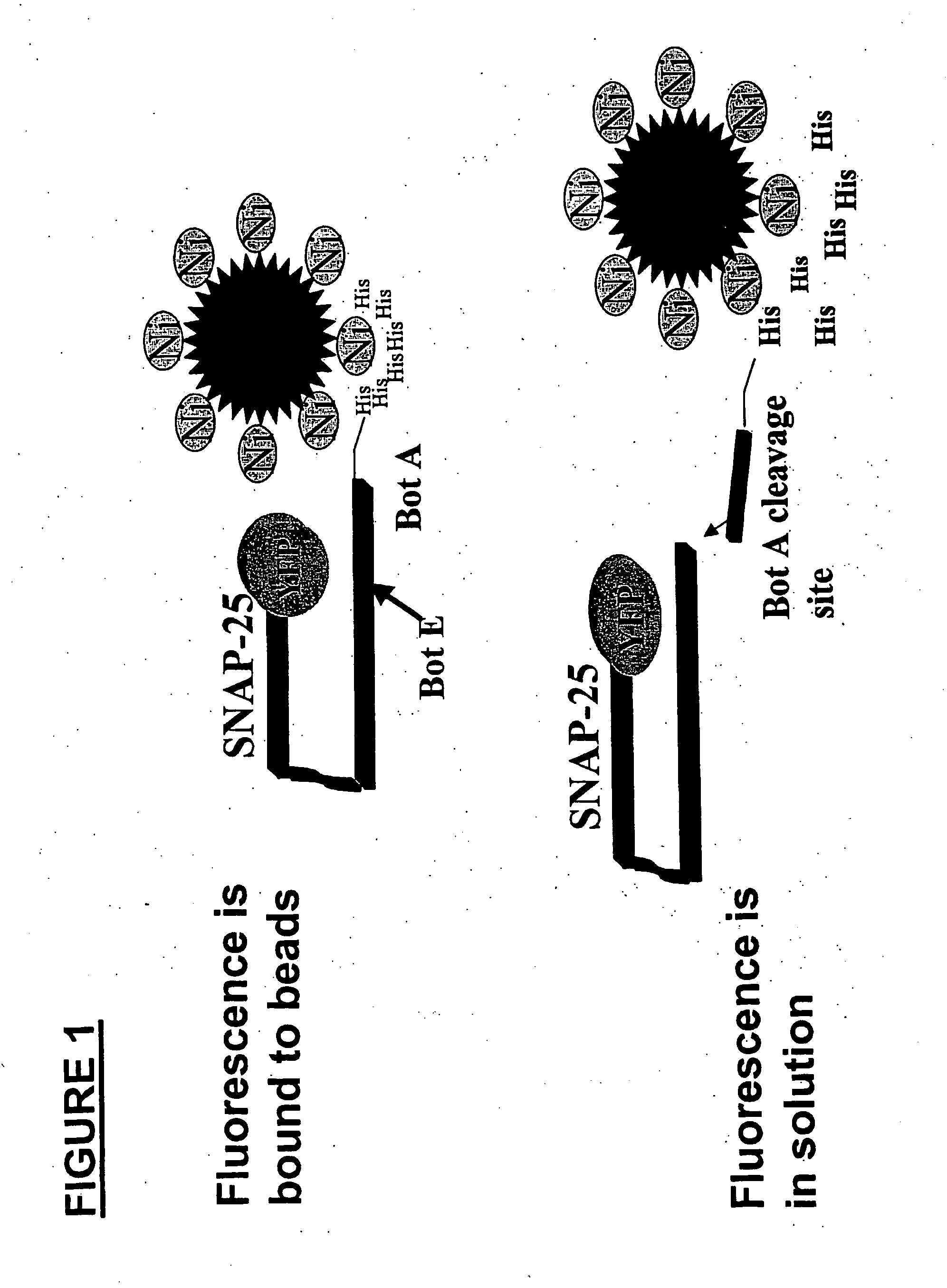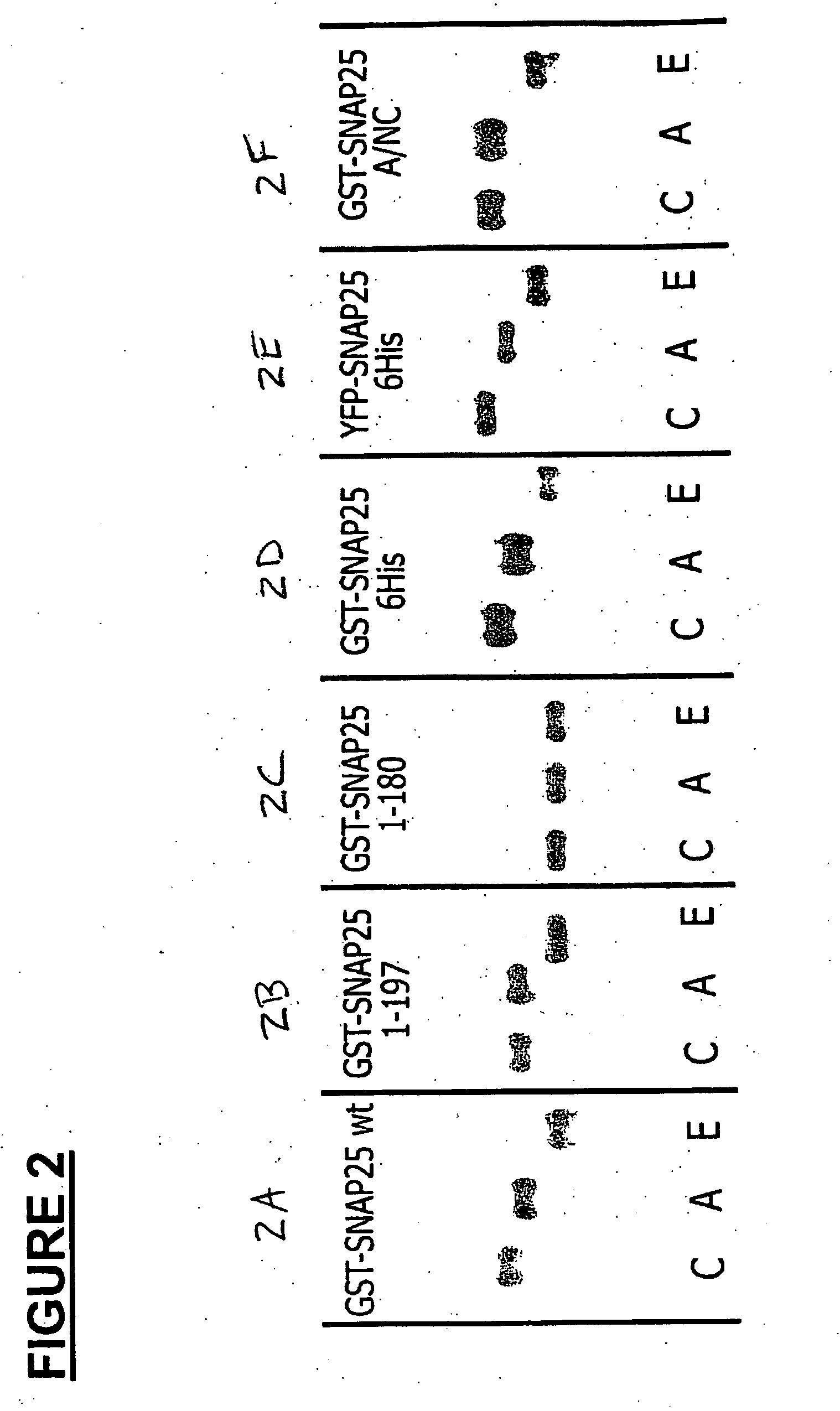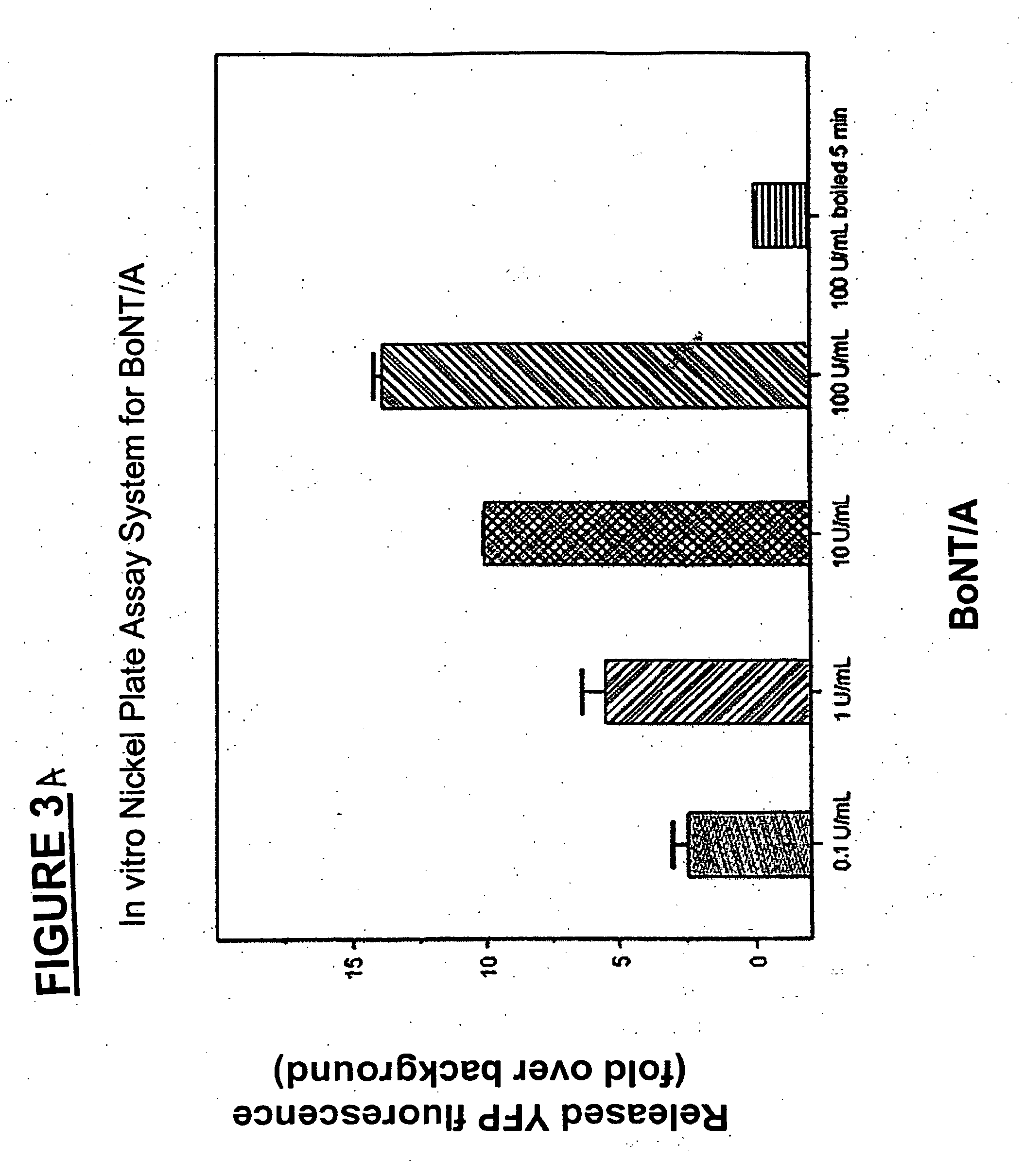Methods for identifying inhibitors of botulinum neurotoxins
a technology of botulinum neurotoxins and inhibitors, which is applied in the field of botulinum neurotoxins inhibitors, can solve the problems of shortening the paralysis time, reducing the safety of patients, and unable to provide effective antidotes for bont intoxication
- Summary
- Abstract
- Description
- Claims
- Application Information
AI Technical Summary
Problems solved by technology
Method used
Image
Examples
example 1
Construction and Expression of YFP-SNAP-25-His×6
[0034] To construct YFP-SNAP-25-His×6, PCR is used to generate His×6 tag (histidine tag) at the carboyl terminus of mouse SNAP-25 (shown in SEQ ID No. 16) and ligated into EYFP-C1 vector (Clontech). Similar constructs can be made with GST reporter domain encoding vectors. For bacterial expression, PCR is used to generate YFP-SNAP-25-His×6 with appropriate restriction sites and cloned into pGEX4T3 vector (Amersham Pharmacia Biotech). The protein is expressed in BL21(DE3) (Stratagene) bacteria and purified with glutathione sepharose 4B (AP Biotech) and the GST motif removed with thrombin cleavage. YFP-SNAP-25-His×6 is also cloned into pET vector (Novagen), expressed in BL21(DE3) bacteria and purified by nickel affinity chromatography. The in-vitro assay described below uses the protein purified from pGEX vector.
example 2
Generation of YFP-SNAP-25-His×6 Cell-Lines
[0035] HEK 293 cells were cultured in Minimum Essential Medium (GIBCO) supplemented with 10% fetal bovine serum, L-glutamine (10%) and pen / strep antibiotics (1%). HEK 293 cells were transfected with YFP-SNAP-25-His×6 plasmid and cultured in media containing G418 until isolated foci emerged. Isolated foci were selected for expansion and screened by immunoblots to obtain clonal cell-lines stably expressing YFP-SNAP-25-His×6.
example 3
Viral RNA Transcription, Transfection and Plague Assays
[0036] Purified plasmid DNAs were linearized by digestion with XhoI and transcribed using SP6 polymerase in the presence of cap analog. Transcription reactions were used for transfection of BHK-21 cells using standard methods. BHK-21 cells (ATCC) were cultured in Dubelco's Minimum Essential Medium (GIBCO) supplemented with 10% fetal bovine serum, L-glutamine (10%) and pen / strep antibiotics (1%). Plague formation was assayed using BHK-21 monolayers.
PUM
| Property | Measurement | Unit |
|---|---|---|
| pH | aaaaa | aaaaa |
| fluorescent | aaaaa | aaaaa |
| bioluminescent | aaaaa | aaaaa |
Abstract
Description
Claims
Application Information
 Login to View More
Login to View More - R&D
- Intellectual Property
- Life Sciences
- Materials
- Tech Scout
- Unparalleled Data Quality
- Higher Quality Content
- 60% Fewer Hallucinations
Browse by: Latest US Patents, China's latest patents, Technical Efficacy Thesaurus, Application Domain, Technology Topic, Popular Technical Reports.
© 2025 PatSnap. All rights reserved.Legal|Privacy policy|Modern Slavery Act Transparency Statement|Sitemap|About US| Contact US: help@patsnap.com



